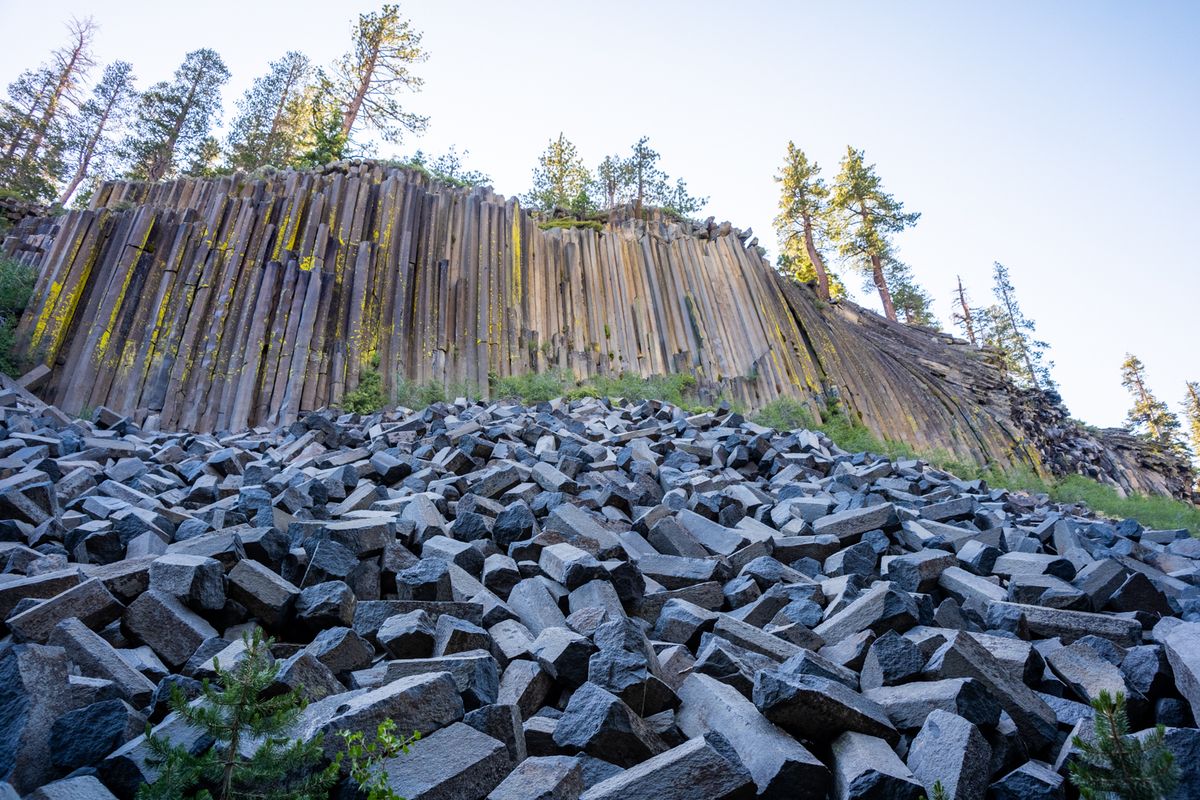Mysteries Behind California’s Devil’s Postpile

Have you ever wondered about the mysteries behind California's Devil's Postpile? This natural wonder, located near Mammoth Lakes, is a geological marvel that attracts visitors from all over. Formed by volcanic activity, the towering basalt columns look almost too perfect to be real. Standing at over 60 feet tall, these hexagonal pillars create a stunning visual that leaves many in awe. Whether you're a geology enthusiast or just love unique landscapes, Devil's Postpile offers something special. Ready to learn more about this fascinating site? Let's dive into its history, formation, and what makes it a must-see destination.
What is Devil's Postpile?
Devil's Postpile is a fascinating geological formation located in California's Sierra Nevada mountains. This natural wonder features towering columns of basalt rock, formed by ancient volcanic activity. The unique hexagonal shapes of the columns make it a must-see destination for nature lovers and geology enthusiasts.
How Did Devil's Postpile Form?
Understanding the formation of Devil's Postpile requires a look back in time. Around 100,000 years ago, a volcanic eruption sent lava flowing through the area. As the lava cooled, it contracted and cracked, creating the iconic hexagonal columns seen today.
Why Visit Devil's Postpile?
Visiting Devil's Postpile offers more than just a glimpse of unique rock formations. The area is rich with natural beauty and outdoor activities. Here are some reasons to add it to your travel list:
Stunning Scenery: The towering basalt columns are surrounded by lush forests and clear streams, providing a picturesque backdrop for photography and relaxation.
Hiking Trails: Numerous trails wind through the area, offering varying levels of difficulty. The hike to Rainbow Falls is particularly popular, rewarding visitors with a stunning waterfall.
Wildlife Viewing: The region is home to diverse wildlife, including deer, black bears, and numerous bird species. Keep your eyes peeled for a chance to spot these creatures in their natural habitat.
Educational Opportunities: Interpretive signs and guided tours provide insights into the geological history and ecological significance of Devil's Postpile.
Best Time to Visit Devil's Postpile
Timing your visit to Devil's Postpile can enhance your experience. The area is typically accessible from late June to mid-October, depending on snow conditions. Here are some tips for planning your trip:
Summer: Warm weather and clear skies make summer the most popular time to visit. However, be prepared for crowds and book accommodations in advance.
Fall: Early fall offers cooler temperatures and fewer visitors. The changing foliage adds a splash of color to the landscape, making it a great time for photography.
Avoid Winter and Spring: Heavy snowfall can make the area inaccessible during winter and early spring. Check road conditions and park alerts before planning your trip.
How to Get to Devil's Postpile
Reaching Devil's Postpile requires a bit of planning, but the journey is part of the adventure. Here are some travel tips:
By Car: Drive to the town of Mammoth Lakes, then take Minaret Road (also known as State Route 203) to the park entrance. Note that the road is closed in winter.
Shuttle Service: During peak season, a mandatory shuttle service operates from Mammoth Mountain Ski Area to Devil's Postpile. This helps reduce traffic and protect the environment.
Hiking In: For the more adventurous, several trails lead into the area from nearby locations. This option offers a more immersive experience but requires good physical fitness.
What to Bring to Devil's Postpile
Packing the right gear can make your visit to Devil's Postpile more enjoyable. Consider bringing:
Hiking Boots: Sturdy footwear is essential for navigating the rocky terrain and trails.
Water and Snacks: There are no food services within the park, so bring plenty of water and snacks to stay energized.
Camera: Capture the stunning scenery and unique rock formations with a good camera or smartphone.
Layered Clothing: Weather can change quickly in the mountains, so dress in layers to stay comfortable.
Sun Protection: Sunscreen, sunglasses, and a hat will help protect you from the strong mountain sun.
Interesting Facts About Devil's Postpile
Devil's Postpile is not just a beautiful destination; it also has some intriguing facts that add to its allure:
National Monument Status: Devil's Postpile was designated a National Monument in 1911 to protect its unique geological features.
Hexagonal Columns: The columns are primarily hexagonal, but some have four, five, or seven sides. This variation adds to the formation's uniqueness.
Rare Formation: Similar basalt columns can be found in only a few places worldwide, including the Giant's Causeway in Northern Ireland and Fingal's Cave in Scotland.
Volcanic Origins: The lava that formed Devil's Postpile came from a volcanic vent located several miles away, highlighting the power and reach of volcanic activity.
Glacial Influence: Glaciers that moved through the area during the last Ice Age helped expose and shape the columns, adding another layer to their geological history.
The Fascinating Legacy of Devil's Postpile
Devil's Postpile stands as a testament to nature's artistry. Its towering basalt columns, formed by ancient volcanic activity, offer a glimpse into Earth's dynamic past. Visitors can marvel at the geometric precision of the columns, hike through scenic trails, and enjoy the serene beauty of the surrounding wilderness. This natural wonder not only attracts geology enthusiasts but also those seeking a unique outdoor adventure. Whether you're exploring the nearby Rainbow Falls or simply soaking in the views, Devil's Postpile promises an unforgettable experience. Its rich history and striking formations make it a must-visit destination in California. So pack your bags, lace up your hiking boots, and get ready to uncover the secrets of this geological marvel. Devil's Postpile awaits, ready to inspire and amaze all who venture to its rugged terrain.

